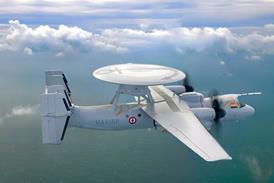Mitsubishi Aircraft is taking longer than expected to develop its regional jet because of the challenges it has encountered in adopting the US Federal Aviation Administration's new certification and approval process.
In a phone interview with journalists, the company's head of sales Yugo Fukuhara says the Mitsubishi MRJ regional jet is the first aircraft to fully apply the US FAA's organisational delegation authorisation (ODA) system, which came into effect in 2009. The ODA was partly applied to the Boeing 787 programme when Boeing was delegated some responsibilities for performing tests to show that the aircraft's lithium-ion battery complied with airworthiness requirements.
Under the ODA system, Mitsubishi is delegated the authority to design, test and analyse procedures and test results to show airworthiness requirements. This means that it also has to invest significant time and resources to develop the required processes.
"With this new system, all design and manufacturing internal processes must be documented in advance and approved by the authorities. We need to build new processes to validate compliance not only for ourselves, but also for all our component partners," says Fukuhara. "Our partners are aware of this new system, but we have to integrate their old system into our new processes, and this needs a long time."
"Of course this new ODA system came in 2009, we knew this system conceptually, but it has taken a longer time than expected," he adds.
The nature of the system means that every component on the regional jet was affected by the process. With a clear process in place, however, maintaining the first flight schedule for its MRJ should be "very straight forward", says Fukuhara.
He adds that the regulators involved in the MRJ are the Japan Civil Aviation Bureau, US FAA and the European Aviation Safety Agency, and that since US FAA introduced the ODA, the system has also been adopted in Japan.
His comments come a week after the Japanese airframer announced a third delay to its programme schedule, pushing first flight of the MRJ90 from end-2013 to Q2 2015, with deliveries to follow in Q2 2017. Mitsubishi explained that design and respective certification took greater resources than expected, thus impacting component deliveries and aircraft fabrication.
"We hope this should be the last delay we announce," says Fukuhara.
Mitsubishi is now assembling its first flight test and ground test aircraft. Though Fukuhara could not put a figure on the percentage of system components that have been produced, he says that 90% of the jet's structure has been manufactured. He also adds that no parts had to be reproduced because of the ODA system.
Final assembly of the first MRJ test aircraft will start this autumn at Mitsubishi Heavy Industries' Komaki plant in Nagoya. Under the revised schedule, the first Pratt & Whitney PW1200G engines should be delivered to Mitsubishi in the spring of 2014.
Asked how the delay has impacted the programme's costs, Fukuhara says the increase is "not so significant" and that Mitsubishi will be able to absorb it, considering the long term business case.
Source: Air Transport Intelligence news


























